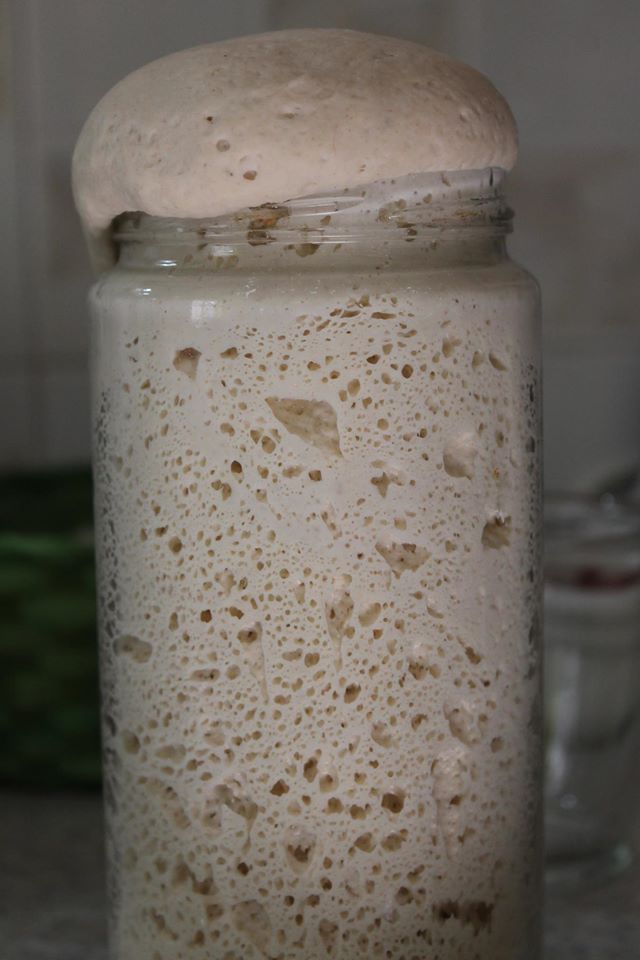

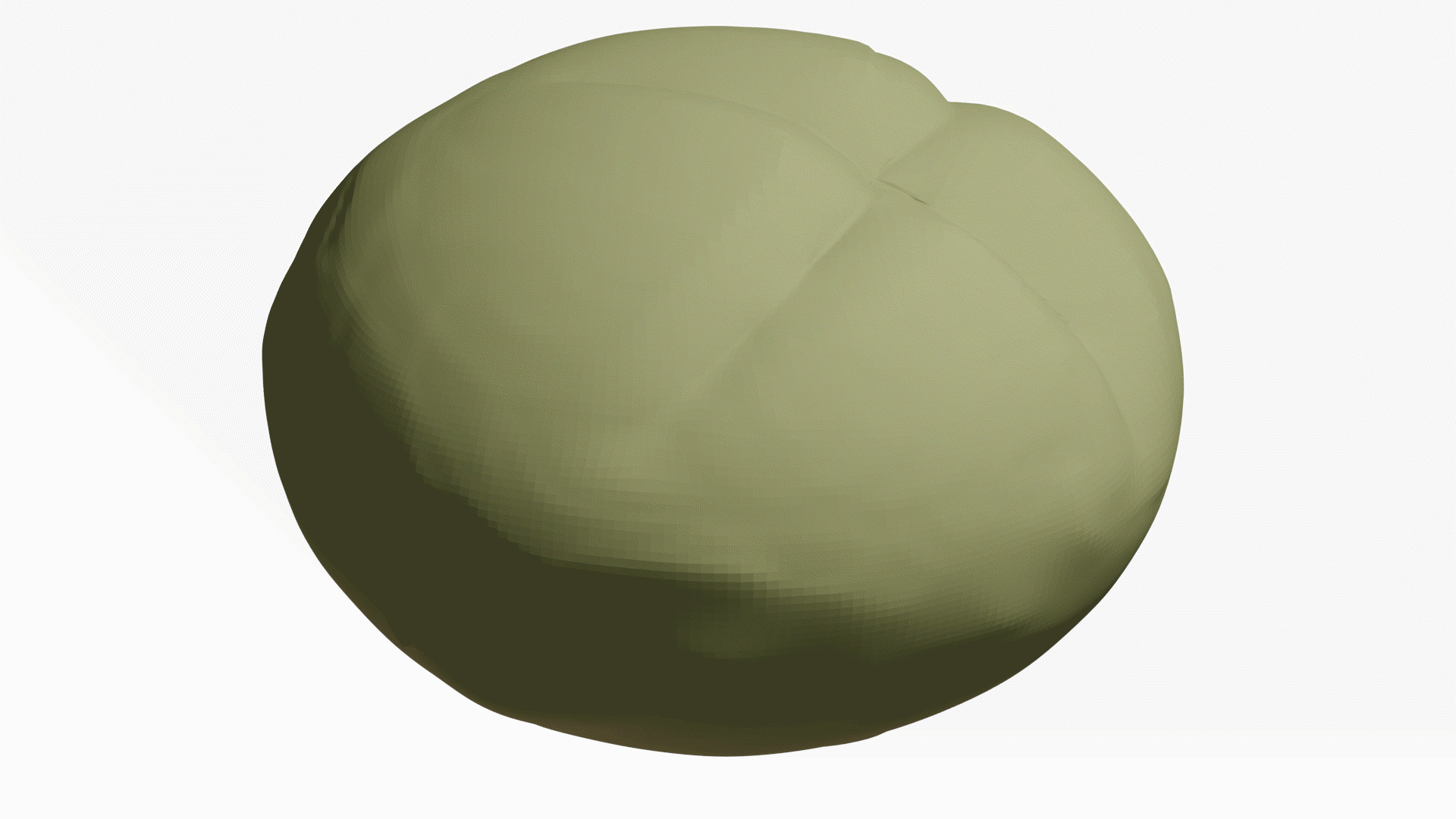
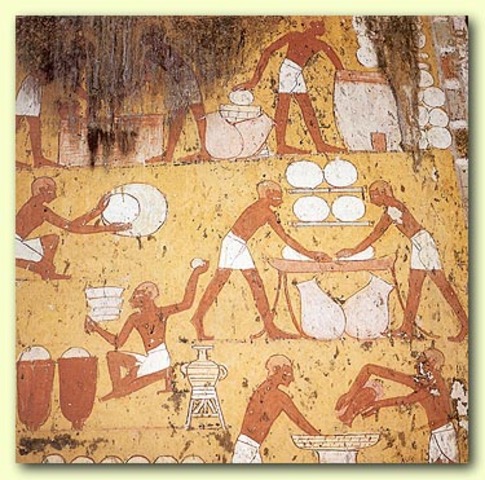
Ingredients:
-1½ cup (200 grams - 8 ounces) bread flour or Manitoba flour.
-½ cup (90/100 grams - 3.5/4 ounces) spring water (45%-50% of flour weight).
-1 tbsp honey.
-Love... give love to your dough :)
Instructions:
Mix all the ingredients to form a soft, smooth and no-sticky dough (like pizza dough). If it's too sticky add a little flour otherwise add more water.
Shape the dough into a ball and place in a glass bowl (do not use metal, wood or plastic bowl to avoid materials contamination, use just a glass one).
Cover with the lid or a plate (do not seal up, just put it on with no pressure), the dough has to breath but not dry out.
Let it rest in a warm place (75-77°F/24-25°C) for 48 hours (usually in my house it's 68°F/20°C so I pre-heated oven to 100°F/38°C, switched it off and turned the light just for few hours - in summer you can leave it at room temperature).
If you put the dough in the oven, put inside some ripe fruit (I prefer an apple, that also gives a good aroma to the dough). This is important to give the dough a lot of yeast to help the rising process.
But if you've just baked something you can skip this passage because the air has still a lots of new yeasts.
After 2 days the dough should be rose and full of little air bubbles, if so congratulation, your mother yeast is born! (If nothing occurs, refresh it as written below, let it rest in a warm place for 48 hours and if nothing happens you have to throw it away - try to read this recipe very carefully and repeat the procedure step by step, don't give up! - slow and steady wins the race!)
Sleep with it to ensure the coexistence. You can create the perfect temperature for the dough to grow by putting it inside your bed at night.
Refresh it by nourishing it with flour and water every week, put it in a glass jar, close it, put in the refrigerator or leave at room temperature. The container where you put the dough should have holes in it, make sure it can breathe.
Saccharomyces cerevisiae
Saccharomyces cerevisiae (/ˌsɛrəˈvɪsi.iː/) (brewer's yeast or baker's yeast) is a species of yeast (single-celled fungus microorganisms). The species has been instrumental in winemaking, baking, and brewing since ancient times. It is believed to have been originally isolated from the skin of grapes. It has been one of the most intensively studied eukaryotic model organisms in molecular and cell biology, much like Escherichia coli as the model bacterium. (1)
Yeasts are unicellular organisms that evolved from multicellular ancestors, with some species having the ability to develop multicellular characteristics by forming strings of connected budding cells known as pseudohyphae or false hyphae. (2)
Yeast sizes vary greatly, depending on species and environment, typically measuring 3–4 µm in diameter, although some yeasts can grow to 40 µm in size. Most yeasts reproduce asexually by mitosis, and many do so by the asymmetric division process known as budding. With their single-celled growth habit, yeasts can be contrasted with molds, which grow hyphae. Fungal species that can take both forms (depending on temperature or other conditions) are called dimorphic fungi. (2)
Many proteins important in human biology were first discovered by studying their homologs in yeast; these proteins include cell cycle proteins, signaling proteins, and protein-processing enzymes. S. cerevisiae is currently the only yeast cell known to have Berkeley bodies present, which are involved in particular secretory pathways.(1)
Yeast S.cerevisiae has also been successfully employed as a model system to study autophagy; the cellular material recycling process. For instance, it has allowed the isolation of the factors specifically involved in autophagy and the characterization of some of their molecular roles. In addition, this organism also possesses all the principal signaling cascades that modulate the cell metabolism in response to nutrient availability in higher eukaryotes. (3)
In 2016, Yoshinori Ohsumi was awarded with the Nobel Prize in Physiology for the discoveries of mechanisms governing autophagy, underscoring the importance of intracellular degradation and recycling. At the same time, it further cements yeas as a prolific model organism. (3)
Remarkably, in Ohsumi's experimentations, autophagy in yeast – like in mammalian cells – seemed to respond to starvation conditions, and defects in autophagy could soon be linked to decreased viability under nutrient scarcity.
Yeast possesses 23% homologous genes to humans; therefore, it is considered as a useful model for gene function studies. Although yeast and human diverged from a common ancestor ~1 billion years ago, lines of evidence demonstrate the strong conservation of gene function between yeast and humans.(4)

What is autophagy?
Autophagy is a lysosomal degradation pathway that is essential for survival, differentiation, development, and homeostasis. Autophagy plays a key role in diverse pathologies, including infections, cancer, neurodegeneration and aging as well as in heart, liver and kidney diseases
The morphological hallmark of autophagy:
Autophagy (or autophagocytosis; from the Ancient Greek αὐτόφαγος, autóphagos, meaning "self-devouring" and κύτος, kýtos, meaning "hollow") is the natural, conserved degradation of the cell that removes unnecessary or dysfunctional components through a lysosome-dependent regulated mechanism. It allows the orderly degradation and recycling of cellular components.(1)
Although initially characterized as a primordial degradation pathway induced to protect against starvation, it has become increasingly clear that autophagy also plays a major role in the homeostasis of non-starved cells.(2)
Defects in autophagy have been linked to various human diseases, including neurodegeneration and cancer, and interest in modulating autophagy as a potential treatment for these diseases has grown rapidly. (2)
The molecular machinery of autophagy is present in the genome of every eukaryotic organism that has been sequenced to date. Thus, the origins of autophagy are inextricably linked to coevolutionary events essential for the emergence of eukaryotic life.(3)
Four forms of autophagy have been identified: macroautophagy, microautophagy, chaperone-mediated autophagy (CMA), and crinophagy. (4)
In macroautophagy (the most thoroughly researched form of autophagy), cytoplasmic components (like mitochondria) are targeted and isolated from the rest of the cell within a double-membrane vesicle known as an autophagosome, which, in time, fuses with an available lysosome, bringing its specialty process of waste management and disposal; and eventually the contents of the vesicle (now called an autolysosome) are degraded and recycled. In crinophagy (the least well-known and researched form of autophagy), unnecessary secretory granules are degraded and recycled. (4)
Macroautophagy is a multistep process by which portions of cytoplasm, damaged proteins and/or organelles are sequestered in a double or multimembrane structure (autophagosome). Upon fusion of the autophagosome with the lysosome (autophagolysosome), sequestered materials are digested by lysosomal hydrolases. The recycling of these intracellular constituents serves as an alternative energy source during periods of metabolic stress to maintain homeostasis and viability.(4)
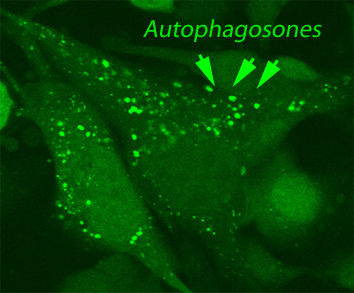
Ultrastructure of autophagy in yeast and mammalian cells. (Left) Electron micrograph of a yeast (S. cerevisiae) cell with autophagic bodies in the vacuole during nitrogen starvation. (Right) Electron micrograph of a forming autophagosome in an amino acid-starved beclin 1-deficient human breast cancer cell expressing exogenous Beclin 1. Courtesy of X. H. Liang, N. Furuya, Y. Wei, and B. Levine. (Scale bars, 1 μm.)
Is Yeast going to outlive us?
Sources:
1-https://en.wikipedia.org/wiki/Autophagy
2-https://www.ncbi.nlm.nih.gov/pmc/articles/PMC3367545/
3-https://www.ncbi.nlm.nih.gov/pmc/articles/PMC1828869/
4-https://www.ncbi.nlm.nih.gov/pmc/articles/PMC3894687/
Is Yeast going to outlive us?
Is Yeast going to outlive us?
Is Yeast going to outlive us?
Is Yeast going to outlive us?
Is Yeast going to outlive us?
Is Yeast going to outlive us?
Is Yeast going to outlive us?
Sources:
1-https://en.wikipedia.org/wiki/Saccharomyces_cerevisiae
2-https://en.wikipedia.org/wiki/Yeast
3-https://www.ncbi.nlm.nih.gov/pmc/articles/PMC5617969/
4-https://www.ncbi.nlm.nih.gov/pmc/articles/PMC5525645/

Yeasts as Saccharomyces cerevisiae had found a place in human cultures since the beginning of civilization. Traces of ancient cultivation pots has been found all over the world and most remarkably in Egypt, where the most ancient bread-making tradition has been recently discovered.
Heat has always been the key for cultivating this essential being to use it in a wide range of applications: from bread making to wine fermentation. This facilitated all the southern Mediterranean, African and Asian early civilizations to active the miraculous captivation of yeast. However, documents shows how this magical mycelia has been probably cultivated because of a fortuity coincidence. (2)
We owe the first description of the microscopic appearance of yeast to Anton van Leeuwenhoek in 1680, who was also responsible for observing bacteria and other small organisms for the first time. However, the word “yeast” as we know it today was not associated with fermentation until 1859, when J. H. van den Broek, working in Utrecht, identified vegetative cells that existed and replicated in fermenting forms, which he dubbed “yeast”. Before this the word was largely associated with where yeast could be found (in the foam) as the Late Old English gist, a cognate to the Middle German words gest, meaning dregs or dirt, and jest, meaning foam. (2)
The history of yeast took a decisive turn in 1857 when Louis Pasteur discovered the fermentation process. Relive this small nineteenth-century revolution! Pasteur believed that the agents responsible for fermentation were yeasts. He established the key role of yeast as the microorganism responsible for alcoholic fermentation. He unveiled these mysteries by proving that the yeast cell can live with or without oxygen. Pasteur understood very early on that yeast was indispensable for forming bread’s aromas and flavors. Baker’s yeast, Saccharomyces cerevisiae, has imposed itself, throughout history and worldwide, as the best way to make the dough rise.(2)
The earliest known records of yeast risen bread come from Ancient Egypt in 1300–1500 BCE and China in 500–300 BC. However, it is noteworthy that recent genomic evidence suggests that the canonical beer and bread yeast, S. cerevisiae, originated in China before moving west 16–14 tya via the route, which would become the Silk Road. This is just before the origin of agriculture, roughly in line with the timing of the oldest bread yet documented (which might or might not have been leavened).This suggests that fermentations happening outside of Asia prior to 16–14 tya likely relied on other species of yeast (not Saccharomyces).(1)
Each ancient human culture that relied upon yeasts and other microbes for fermentation would have employed specific techniques for ensuring the presence of those microbes. For this review, we will focus primarily on Western bread. Evidence for the simplest method for baking leavened bread derives from an Old Kingdom tomb dating to between 2450 and 2401 BCE.It involves mixing and kneading the dough in a bowl and baking directly on the fire’s hot ashes, and was likely used by peasants and workers in later eras.During all of the Kingdoms, molds were also used, with the dough either being poured into the mold, or in later periods, shaped.Other sources propose a pre-fermented mix prepared by roasting malt loaves, crushing them, mixing them with water and whole grains (likely the yeast source) and allowing it to ferment before straining it through a straw mat, although the precise time period method was used remains unclear. The dough was kneaded by walking on it, like one might press grapes, baking the loaves in large ovens lined with bricks, stone slabs, or in rare cases, iron depending on the era.(1)
Hypothesizes that knowledge of these fermentation and baking methods passed from Egypt and Babylon to ancient Greece and ancient Jewish cultures. From Greece, the knowledge passed to Rome, where they kneaded dough by hand instead of by foot. Pliny the Elder records that professional bakers did not appear in Rome until 168 BCE, after a war with King Perseus. (1)

The first “commercial” production of yeast, that is the growing of yeast for the sole purpose of selling it to others, arose in the 1700s, but unlike modern pure culture production, it was more the art of keeping a continuous colony of fermenting yeast in dough or hops for use in brewing more than baking. Prior to the introduction of these “commercial” yeasts, the primary yeast source for bakers and housewives was the yeasty foam or dreg waste collected from completed beer fermentations, and were sold directly by breweries. In the 1780s and 1790s, the development of compressed yeast began to appear in England, Germany, and Netherlands. Early recipes for commercial pressed yeasts consisted of a pressed block of fermented hops, rye, and malt, or some mixture of the three depending on the country and local producer, and could contain as little as 4–6% yeast, which would consist of multiple strains as well as any associated bacteria.
By the early 1800s, these compressed yeasts were outcompeting the excess or spent yeast from brewers. In addition to compressed yeast, records from 1771 provide a simple drying method for yeast, which required mixing yeast and wood ash together before placing it in the sun to dry further. Dried yeast was first sold commercially in Vienna in 1822. Other yeast preservation methods besides drying included bottling yeast, covering the yeast with oil, and burying it several feet underground to keep it cool. (1)
By May 1996, the first complete genome sequence of a eukaryote, the yeast Saccharomyces cerevisiae, was obtained. At that time, it was the largest genome sequenced to date. It contains just over 12 million base pairs packaged in 16 chromosomes. Yeast has approximately 6,000 genes in all and roughly a third of these genes are related to human genes. These genes have survived with relatively little alteration over the one billion years of evolution that separate humans and yeast. Yeast, once used only for baking in brewing, is now giving us new insights into our very own existence.
It is no wonder that yeast has played such a fundamental role in human society since ancient times as we now know we may have a lot more in common with yeast than we could have ever imagined. And just like humans’ yeast’s potential continues to grow and will continue to benefit humankind, hopefully for the next 5,000 years to come. (2)
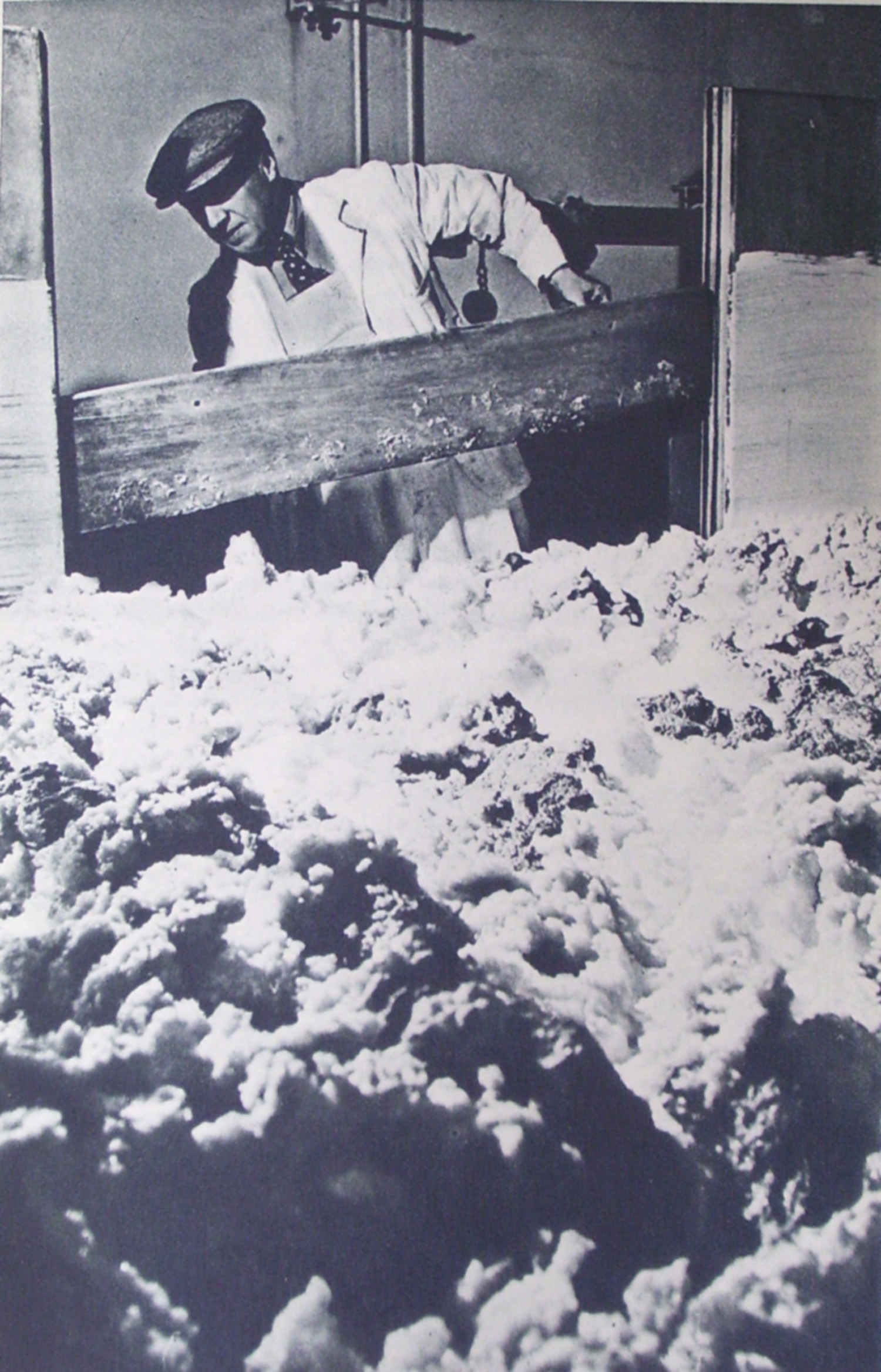
By May 1996, the first complete genome sequence of a eukaryote, the yeast Saccharomyces cerevisiae, was obtained. At that time, it was the largest genome sequenced to date. It contains just over 12 million base pairs packaged in 16 chromosomes. Yeast has approximately 6,000 genes in all and roughly a third of these genes are related to human genes. These genes have survived with relatively little alteration over the one billion years of evolution that separate humans and yeast. Yeast, once used only for baking in brewing, is now giving us new insights into our very own existence.
It is no wonder that yeast has played such a fundamental role in human society since ancient times as we now know we may have a lot more in common with yeast than we could have ever imagined. And just like humans’ yeast’s potential continues to grow and will continue to benefit humankind, hopefully for the next 5,000 years to come. (2)
Sources:
1-https://www.ncbi.nlm.nih.gov/pmc/articles/PMC7686800/
2-https://www.exploreyeast.com/what-is-yeast/yeast-one-of-humankinds-oldest-ingredients/
"Co-yeastxistence"
What would happen if we treated yeast as our peer, nourishing it with our body heat? What would happen if the dough could closely listen to our heartbeats?
The yeast Saccharomyces cerevisiae is a widely used model organism for studying cell biology, metabolism, cell cycle and signal transduction. Although this creature is widely humanized and adapted to study human biology, both our bodies are interconnected trough synthetization of sugars and production CO2. Yeast is phylogenetically distant from human and mammalian cells; a number of key regulatory elements are highly conserved between yeast and human. However, what would happen if a close coexistence would be put into action?
The human body temperature makes the perfect habitat for yeast cells, moreover, not only the average 36°c is ideal for yeast cultivation, but also the human heart beats could influence the general growth (if not also the taste) of the dough.
The temperature plays an important role in the mycelia development. Yeast lives 40% longer when grown at the elevated – and mildly stressful – temperature of 36/37°C instead of 30°C. Nevertheless, how can yeast, or any other organism, change its lifespan in response to stressful conditions? This can be observed in sexual crossing and clonal division (budding).
Budding yeast (Saccharomyces cerevisiae), as its name suggests, divides by budding small daughter cells from its surface. The mother cell gets older with each division, whereas the age of each daughter cell is reset to zero. The mother cell protects the daughters by keeping some harmful aging factors for itself. Many aging factors – like toxic DNA circles – are anchored to the membranes of the endoplasmic reticulum (the compartment in the cell where many proteins are made) and the nucleus (the compartment where the cell's genetic information is stored). Before the cells divide, a diffusion barrier keeps molecules in the membranes of the mother cell, preventing them from entering the membranes of the daughter cell.
When the Yeast becomes your beast, not a mere aliment, but a connectivity tool for wild and relaxed dreams that can be easily shared with friends and loved ones.
The yeast embodies the quintessence of primitive, ancestral, maternal. The oldest and the least known wild creature that feeds from fruits flown by winds. There the proliferation without dissipation, from cell to cell, continuous cycles.
A new relationship with these mycelia brings it back to the mysticiscm it had in the past: the miraculous dough cease to appear object of elevated comfort or capital.
The new equal treatment will involve creating the perfect nourishing environment for the dough’s growth, with plenty of proteins and sugars it will consume. This new recipe for a coexistence is a strict pact with a living being that involves care.
The process requires a very peculiar container, entangled to the body to ensure heat circulation and attunement to the heart. There, the influence will be maternal, like a ritual of giving birth weekly.
Then the sharing of ours of growth and relaxation, breathing and celebration, the life cycle.
Creating numerous links with this dough-like creature has a special meaning, especially if done during the restful hours of sleep. The container would serve as a vessel in wood and glass for an attunement of profound comfort in a cloud of gluten, where all the proteins get assimilated.
Lower the heat of the body, higher it will need the cross-species/ancestral hug to be tighter, and the heart to be slower, to ensure relaxation. To enclose the connection and a better grade of taste, towards the best ending of this performance.
https://youtu.be/7SQWnWwZM1E